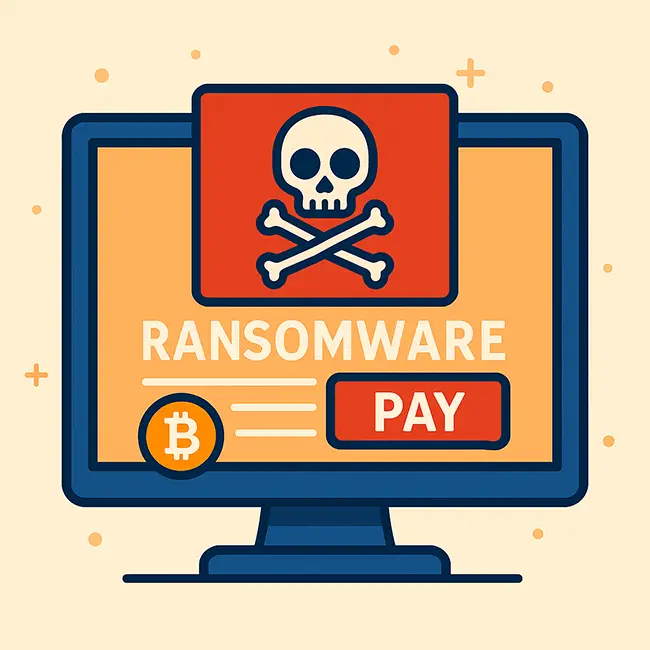Ransomware is one of the most disruptive and costly forms of cybercrime today. Whether you’re an individual, a small business, or a large organization, understanding how ransomware works—and how to protect yourself—is critical.
What Is Ransomware?
Ransomware is a type of malicious software (malware) designed to block access to your data or system until a ransom is paid. In most cases, ransomware encrypts your files, rendering them unreadable, and displays a message demanding payment (usually in cryptocurrency) to unlock them. Some variants go a step further, threatening to leak sensitive data if the ransom isn’t paid.
How Does Ransomware Spread?
Ransomware can spread in multiple ways—often disguised as something harmless:
- Phishing emails: The most common delivery method. Victims receive an email with a link or attachment that, once clicked, installs the ransomware.
- Malicious downloads or ads: Downloading software from untrusted sources or clicking on deceptive pop-up ads can silently install ransomware.
- Remote Desktop Protocol (RDP) attacks: Hackers exploit weak or stolen credentials to gain remote access to systems and manually deploy ransomware.
- Software vulnerabilities: Unpatched software or outdated systems may be exploited to install ransomware without any user interaction.
- USB drives: In some targeted attacks, infected USBs are used to introduce malware to air-gapped or offline systems.
How to Prevent a Ransomware Infection
Prevention is your first and best line of defense. Here are key practices to follow:
- Back up your data regularly: Keep backups on a separate device or cloud service not connected to your main network.
- Use up-to-date security software: Reliable antivirus and anti-malware tools can block known ransomware strains before they run.
- Keep systems and software updated: Apply patches and updates promptly to close security gaps.
- Train employees and users: Most ransomware attacks start with a human mistake. Teach your team to recognize suspicious emails, links, and attachments.
- Use multi-factor authentication (MFA): Especially for remote access tools like RDP or cloud accounts, MFA can stop attackers even if they have a password.
- Limit user permissions: Don’t give admin-level access unless absolutely necessary—this limits the spread if a machine gets compromised.
What to Do If You’re Infected
If you suspect a ransomware attack, time is critical. Here’s what you should do:
- Disconnect the infected machine immediately from the network to prevent the ransomware from spreading to shared drives or other devices.
- Do not pay the ransom if possible. There’s no guarantee you’ll get your files back, and paying funds criminal activity. Instead, report the incident to authorities (e.g., the FBI’s Internet Crime Complaint Center).
- Restore from backups if you have clean, recent copies.
- Use ransomware decryption tools: Some variants have known weaknesses, and free decryption tools are available at sites like No More Ransom.
- Contact a cybersecurity professional: For serious infections, professional digital forensics and remediation may be needed.
- Notify affected stakeholders: If personal data was involved, you may be legally required to inform customers or regulatory bodies.
Long-Term Recovery and Strategy
Even after removal, ransomware can leave systems vulnerable. Take these steps to strengthen your future defenses:
- Audit all systems and access points
- Rebuild affected systems from scratch if integrity is questionable
- Review and harden your security policies
- Invest in cybersecurity insurance to help with future incidents
In Summary
Ransomware attacks are sophisticated, fast-moving, and increasingly targeted—but they are not unstoppable. With the right preparation, smart habits, and a solid incident response plan, you can dramatically reduce your risk and recover more effectively if an attack occurs.
If you’re unsure whether your systems are secure or if your backups are ransomware-resilient, now is the time to take action. Prevention costs far less than recovery.

